Hibiscus is a large genus of evergreens that belongs to the family Malvaceae. Most species of the genus grow in the tropical regions of Asia as a wild crop, and only some of them have been successfully cultivated. One of these species is Chinese hibiscus, or Chinese rose. This is an evergreen shrub with a voluminous crown, which during flowering throws spectacular bright buds.
Thanks to its lush flowering, the shrub has gained wide popularity among domestic flower growers and is now a frequent guest of residential and office premises. Bright and unpretentious hibiscus has been successfully grown for many years at home, because caring for it is absolutely not difficult, and even an inexperienced grower can provide the flower with the proper conditions of detention.
Content
Description of Indoor Hibiscus
The Chinese rose is a beautifully flowering evergreen indoor hibiscus, with a smooth upright trunk and voluminous crown. The branches of the bush are covered with gray-green bark. In the natural habitat, the hibiscus height can reach 3 m. The shoots of the bush are completely covered with sufficiently large leaves up to 15 cm long, having the shape of an elongated oval with a sharp end.
The edges of glossy sheet plates are serrated. Hibiscus leaves are predominantly colored deep green, but variegated varieties can also be found. During flowering, bright large funnel-shaped flowers appear on long pedicels, consisting of 5 smooth or double petals. The size of each flower can reach 16 cm. There are varieties with pink, orange, yellow and red color buds.
Chinese hibiscus has become the parent for many hybrid varieties that differ in the color of leaf blades and flowers. The most popular Chinese rose hybrid varieties include:
- Gait. The flower is distinguished by its lush terry buds of pink or orange.
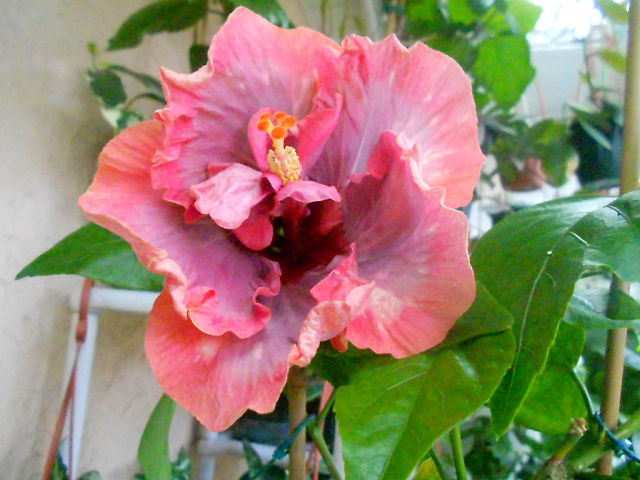
Gait - Dark night. The variety is striking in its unique color. The petals of its flowers are painted in burgundy or gray-purple shades. The base of the petals is red.
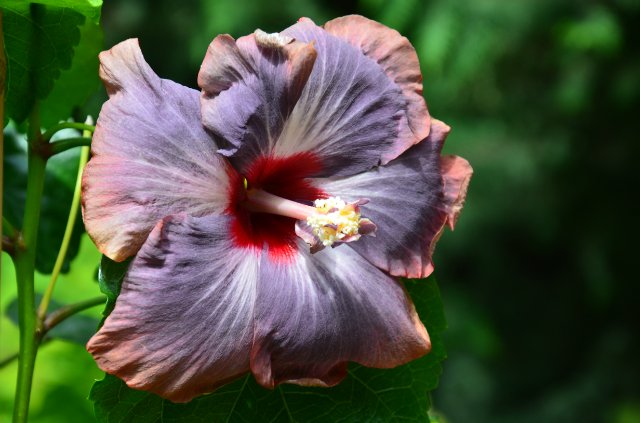
Dark night - Borias. Shrub with large buds of white or lemon color. The base of the petals is painted burgundy.
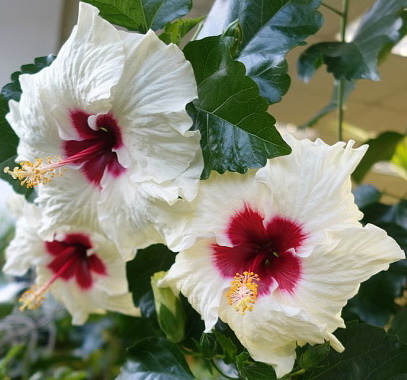
Borias - Parple Majestic. Variety with a variegated color of buds. The wavy edges of the purple petals are decorated with white stains and blotches that only enhance the beauty of the flower.
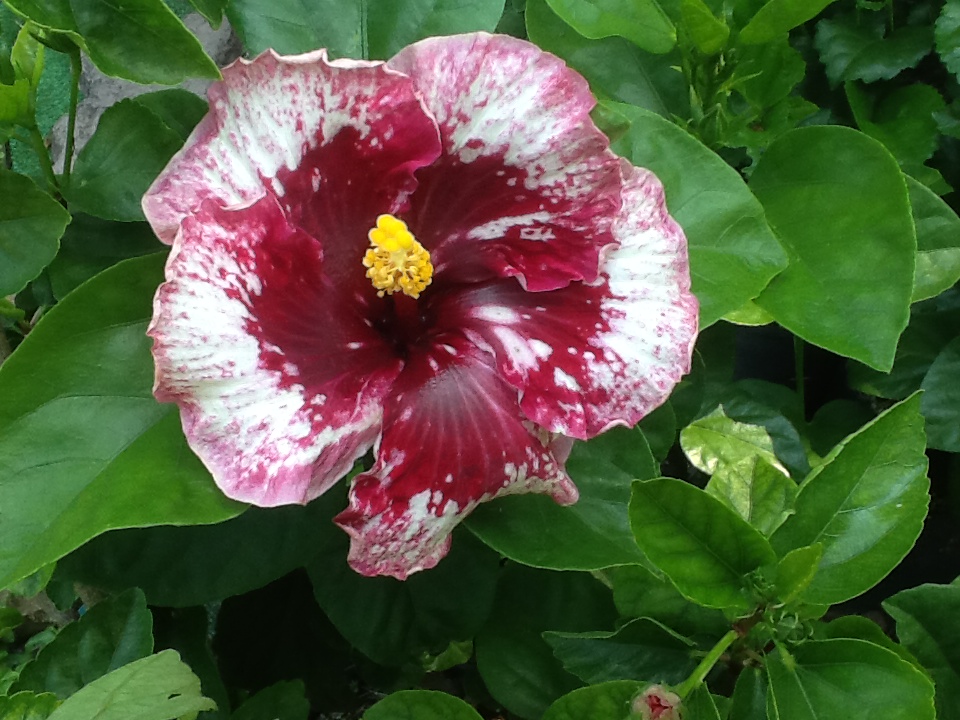
Parple Majestic - Carmen Keane. One of the brightest varieties of hibiscus, characterized by an unusual color of flowers. Bright pink petals end with a white corrugated edging.
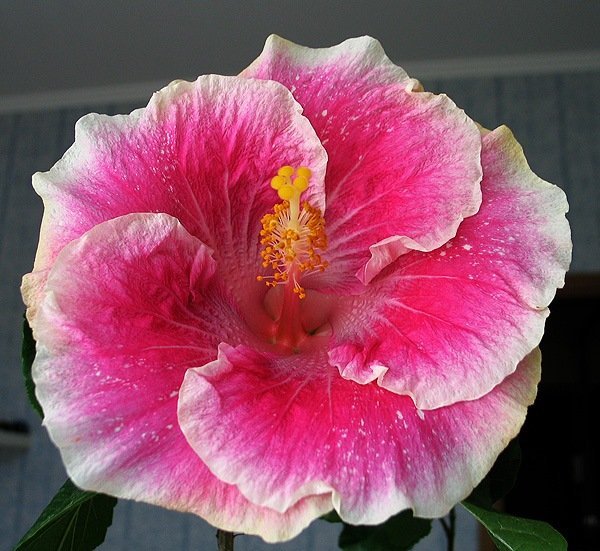
Carmen Keen
All hybrid varieties are as unpretentious in care as their parent.
Hibiscus care at home, secrets and difficulties
The plant is completely unpretentious and can continue to grow green mass in almost any conditions. However, inappropriate humidity, temperature, and incorrect pruning can cause it to not bloom.
Lighting
The photophilous shrub prefers to grow in a well-lit place.However, when choosing a place to place the flower, it must be borne in mind that direct UV rays can adversely affect its decorative effect. For this reason, the plant is best placed on the eastern or western windowsills.
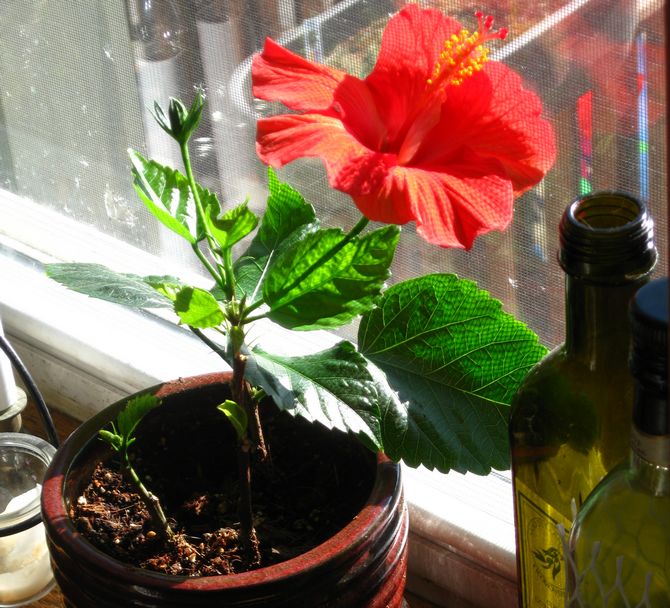
Therefore, even in the winter season, the plant should receive a sufficient amount of light. For this, the shrub can be provided with additional lighting using phytolamps.
Temperature and humidity
During the active vegetation period, which occurs in the warm season, the bush feels good at a temperature of from 20 to 24 ° C. With the onset of cold weather, it is recommended that the plant provide a dormant period by lowering the room temperature to 14-16 ° C. Such a wintering will have a positive effect on the subsequent flowering of the bush.
The flower prefers to grow in a humid climate. You can increase the air humidity by installing a container with wet expanded clay near the plant. The shrub responds well to daily spraying, especially in summer and winter, when the air in the room becomes dry due to heat or operation of heating devices. A flowering shrub should be sprayed carefully, preventing water from entering its buds.
Watering and feeding
Moisture-loving flower needs frequent and plentiful watering, especially during the period of active vegetation. However, moisture must not be allowed to stagnate in the pot or pan. It is better to water the flower immediately after the top layer of earthen substrate dries out a little. In autumn and winter, the flower does not need such abundant watering. At this time of the year, you can allow the complete drying of the upper layer of soil mixture.
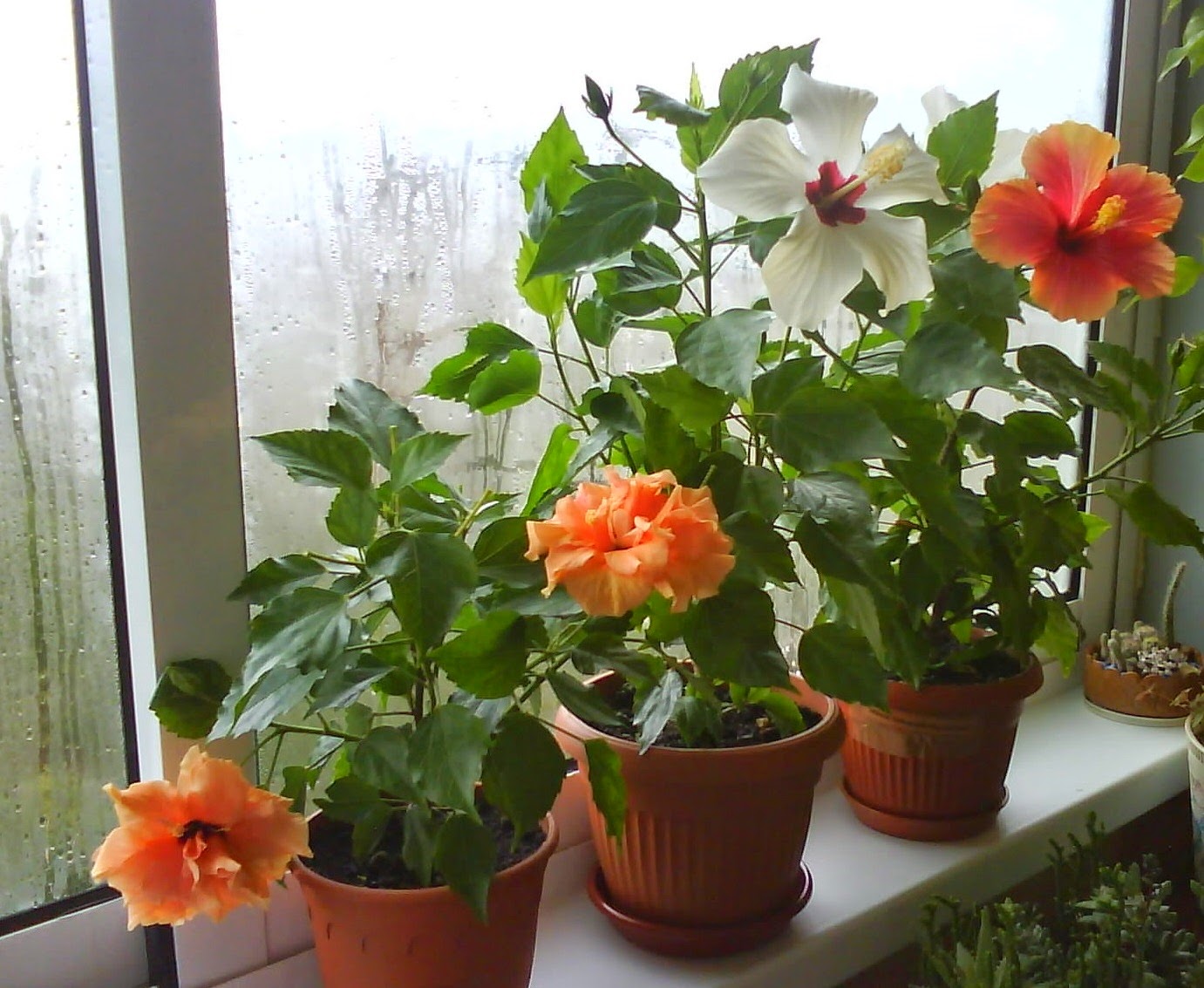
Regular feeding in the spring and summer plays an important role in the flowering of the bush. Lack of nutrients in the soil can cause the bush to drop the buds that have not yet opened. For feeding, you can use liquid complex fertilizers for flowering ornamental crops. The frequency of fertilizer application is 1 time in 2 weeks.
Pruning and pinching
The pruning procedure plays a crucial role in the flowering of the bush. The fact is that the buds are laid exclusively on the young shoots of the flower, the formation of which stimulates pruning. The procedure is recommended to be carried out in the spring, after a plant transplant.

During pruning, the shoots are shortened by 1/3 of the total length. Weak, diseased and growing shoots inside the bush are removed completely. It is recommended to treat the places of cuts with garden varieties or sprinkle with charcoal. Pinching the shoots immediately after the flowering period also stimulates the formation of new lateral sprouts.
Winter preparations
Cold wintering has a positive effect on the splendor and duration of the future flowering of hibiscus. However, the plant must be properly prepared for the rest period, so as not to injure it with sudden changes. To do this, immediately after the flowering of the bush, you can begin to gradually decrease the air temperature in the room.
It is also necessary to reduce the amount and abundance of watering, since in a cool room, moisture from the soil evaporates much more slowly. In addition, it is recommended to completely abandon the application of fertilizers or reduce the frequency of fertilizing up to 1 time in several months.
Why Indoor Chinese Rose Does Not Bloom
Many gardeners at least once encountered a problem when their hibiscus refuses to bloom, although at first glance it looks completely healthy.
The main reasons why the plant is not color:
- Lack of light and moisture.
- Lack of nutrients in the soil, especially phosphorus.
- Overfeeding plants with nitrogen fertilizers.
- Untimely pruning or lack thereof.
- Shrub planted in too wide a container.
- The plant did not have a resting period.
- Diseases and pests.

Flowering period and violation of the rules of care
With proper care, hibiscus can bloom for several months. As a rule, the flowering period falls on the summer time of the year and can last from June to September. The life expectancy of one flower is one, maximum two days. Improper care of blooming hibiscus, can lead to the dropping of unopened buds or a quick fall of flowers:
- Poor watering, lack of nutrients in the earthen substrate, the maintenance of the bush in a cold room, as well as a draft, lead to the fall of buds that have not yet had time to open.
- Hibiscus reacts similarly to a sharp change in location, therefore it is impossible to rearrange the flowering shrub.
- The lack of light during the flowering period will significantly reduce its duration.
- It is also worth remembering that you can not allow water to get on the flowers of the bush, otherwise they will become stained and fall off.
Diseases, pests
Some diseases also do not allow the plant to bloom:
- Watering plants with hard water, high in chlorine, causes chlorosis. In the presence of this disease, the old leaf plates of the bush begin to fall off, and new ones grow yellow. Treatment includes: transplanting the plant, changing the water for irrigation to soft water with the addition of iron chelate.
- Excessive watering can lead to decay of the root system, as a result of which the hibiscus begins to become bare. Lack of treatment or untimely resolution of the problem can lead to the death of the bush.
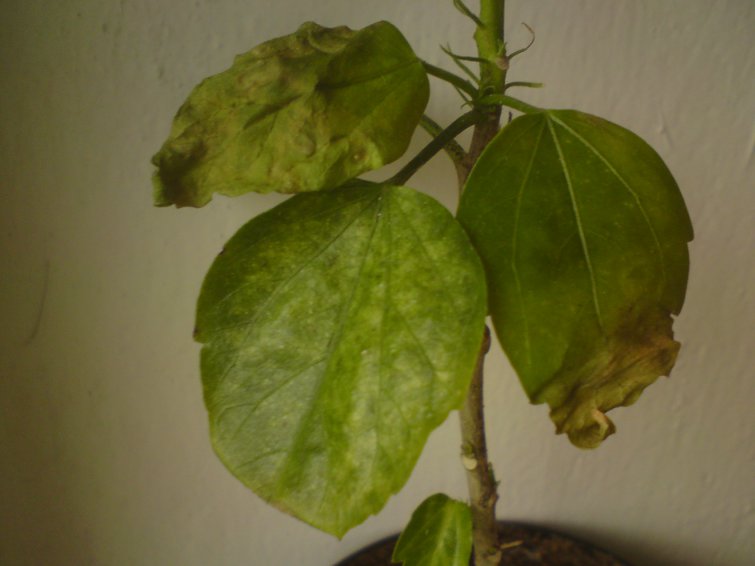
The situation can be corrected only by removing all rotted roots and transplanting the plant into new soil. - The dry indoor climate is the optimal environment for the reproduction of spider mites. You can detect the pest by a thin web on the back of the leaf plates. Processing the bush with a soapy solution or acaricide will help destroy pests.
- Hibiscus can also be affected by aphids. The insect primarily affects the buds and young leaves of the bush. You can cope with the parasite only with the help of systemic insecticides.
Propagation by cuttings and transplantation of a houseplant of hibiscus
Young hibiscus can be grown from seeds or cuttings, however, the first method of growing a bush is almost never resorted to because of its complexity. But the propagation of hibiscus by cuttings is a fairly quick way to get a new plant without much effort. In addition, a plant grown from cuttings can bloom in the first year of life.
- For rooting, it is best to use young freshly cut cuttings that remained after spring pruning of the bush:
- On cuttings with a length of 10 to 15 cm, from 2 to 4 internodes should be present.
- Cuttings root equally successfully both in soil and in water:
- for rooting in the soil from planting material, it is necessary to remove all leaves except the top pair of leaves, the cuttings are placed in a container filled with a moist substrate of peat and sand, and covered with a glass or plastic jar to create greenhouse conditions; rooting time 1.5-2 months;
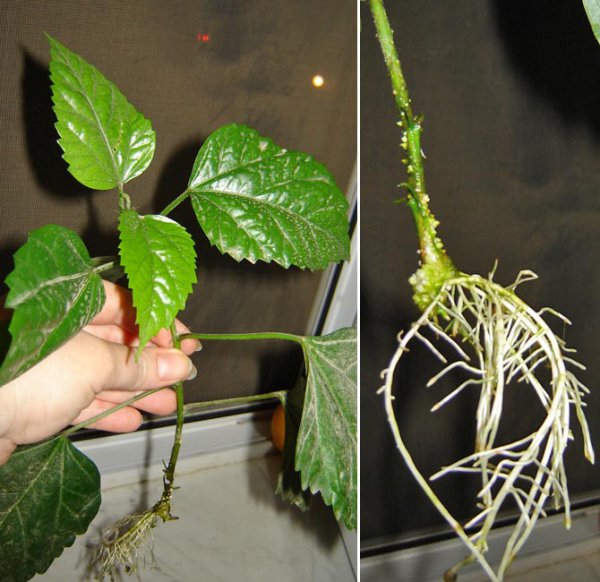
Propagation by cuttings - also cuttings can be placed in a container with water and leave them there until the formation of roots; as a rule, twigs root in water in 25-30 days; It is recommended to cover the container with water with a glass jar to increase humidity.
- for rooting in the soil from planting material, it is necessary to remove all leaves except the top pair of leaves, the cuttings are placed in a container filled with a moist substrate of peat and sand, and covered with a glass or plastic jar to create greenhouse conditions; rooting time 1.5-2 months;
- After the roots appear on the cuttings, they are transplanted into a pot with a diameter of up to 10 cm and looked after as a mature plant.
It is necessary to transplant the plant according to this algorithm of actions:
- Put a drainage layer from 2 to 4 cm wide at the bottom of the new tank. Fine pebbles or expanded clay can be used for the drainage layer.
- Fill the drainage with a pre-prepared soil mixture. Layer width - 4-6 cm.
- Carefully remove the hibiscus from the old container and inspect its roots for disease or damage.
- Place the bush in the center of the new container and fill the void of the pot with soil.
- Seal the earth around the bush.
- Water the plant abundantly. It is recommended to pour out the water that drains into the sump to prevent root decay.
For planting a bush, it is better to use a loose and nutritious earthen substrate, consisting of turf, humus, river sand and peat, taken in a ratio of 2: 1: 1: 1. If the pot is replaced during the transplant, then each subsequent container should be 2-4 cm larger than the previous one.
It is best to use a deep narrow container, which will interfere with the rapid growth of roots and stimulate flowering.
Common Growing Questions
Chinese hibiscus is a beautiful evergreen shrub, which is a frequent guest of residential premises and even government institutions. Lush bright flowering and unpretentiousness in care, made hibiscus the most popular indoor culture. Knowing the main nuances regarding watering, lighting and pruning will help to grow a beautiful and healthy shrub that will delight you with its flowering for several months.

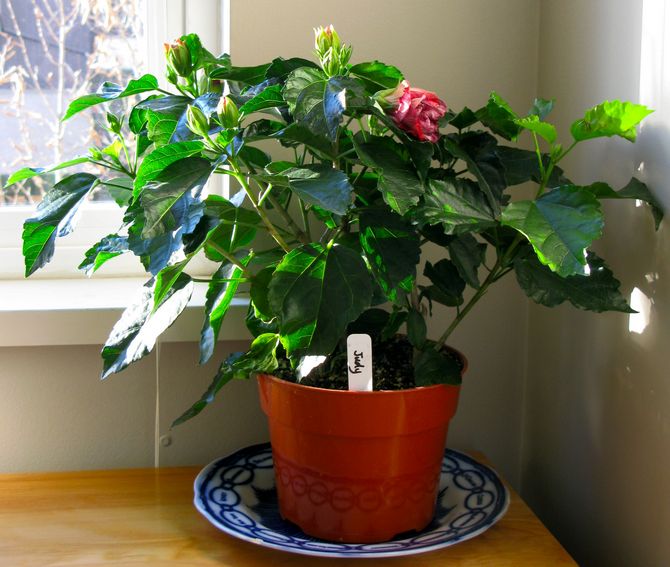
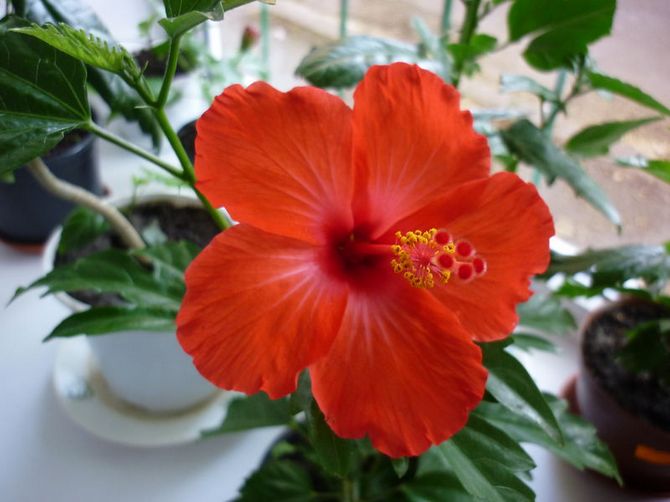
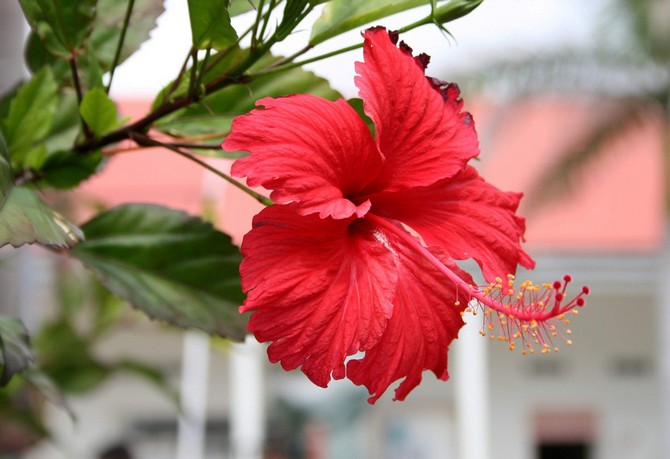



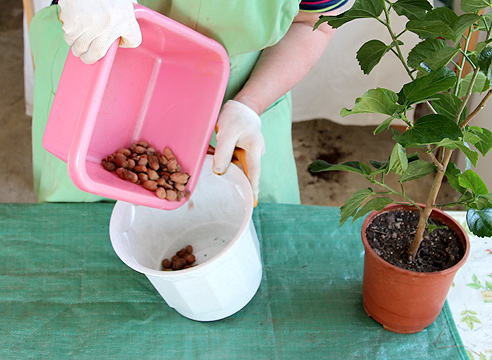
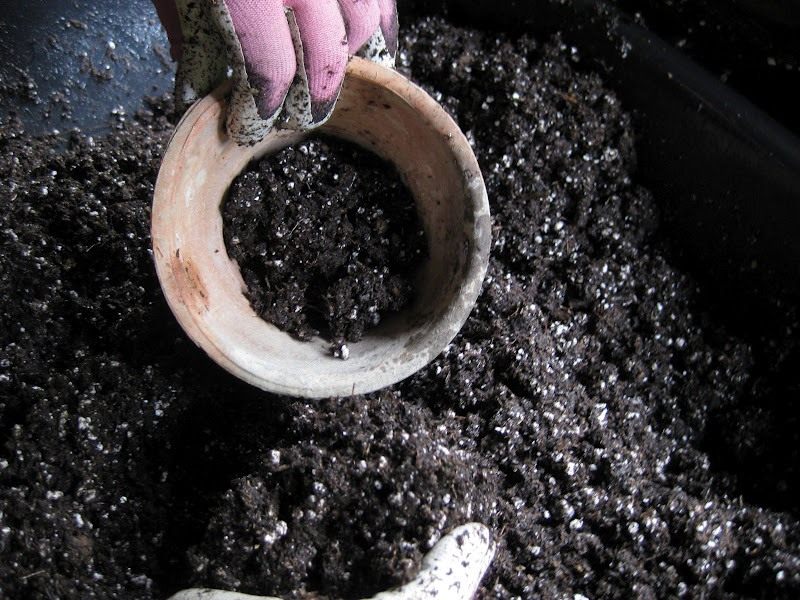
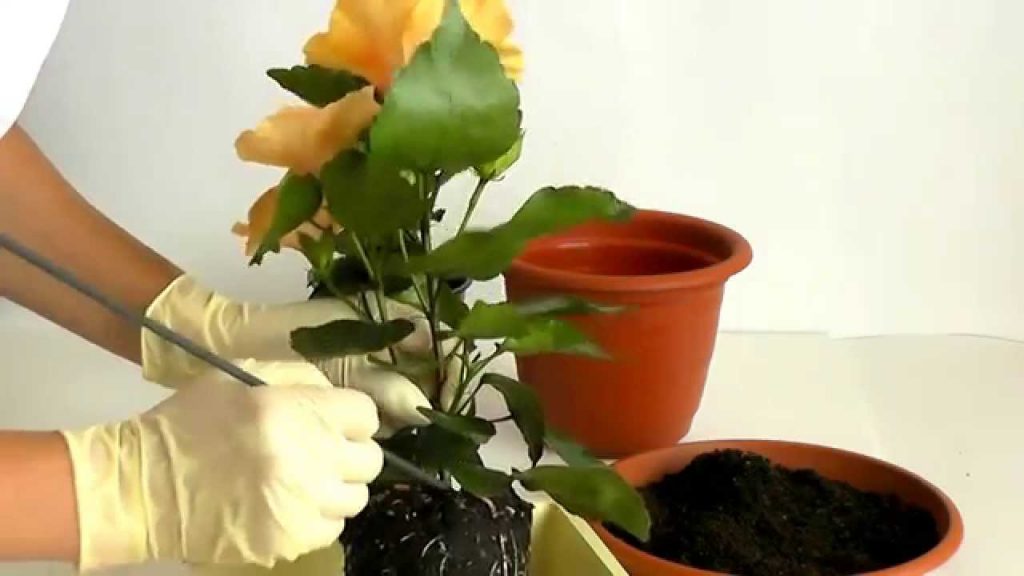
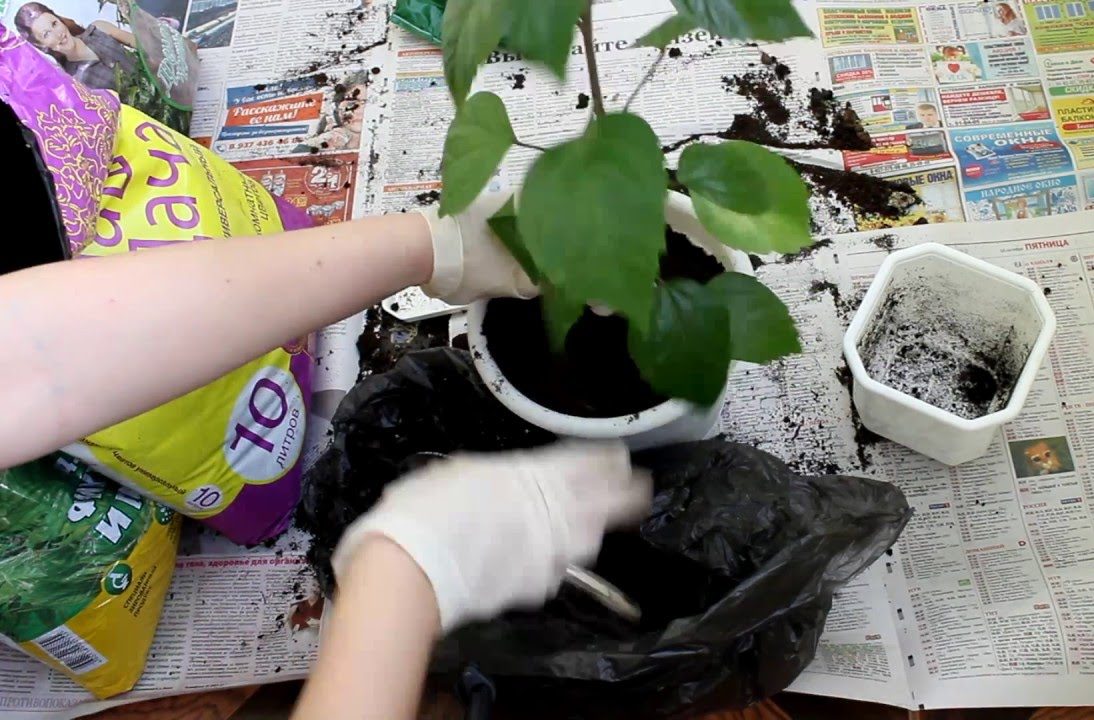
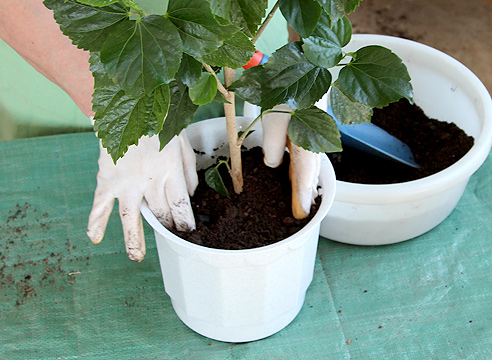
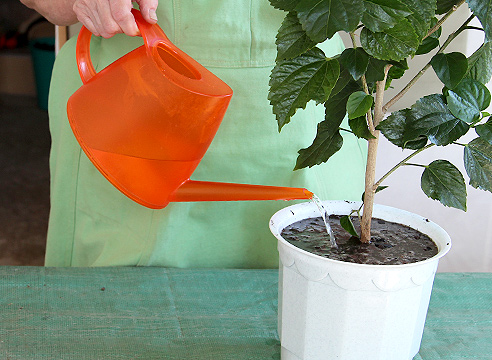
 Sow in the ground, without seedlings: 10 beautiful and unpretentious flowers
Sow in the ground, without seedlings: 10 beautiful and unpretentious flowers Platicodon planting and outdoor care
Platicodon planting and outdoor care Hosta - planting and care in the open ground in the Urals
Hosta - planting and care in the open ground in the Urals Oleander - care and growing at home
Oleander - care and growing at home